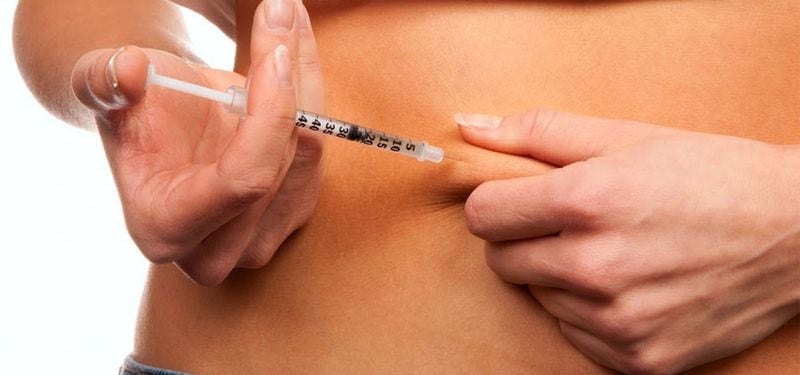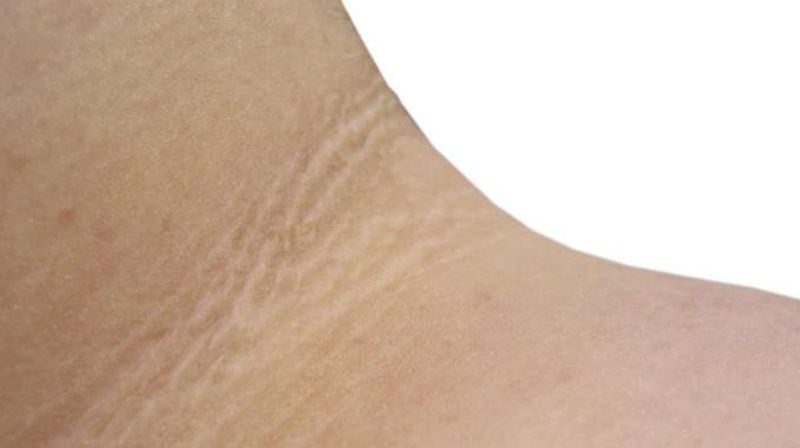Its early detection can help reverse its effects, which can mean diabetes or serious heart disease. Three specialists explain its risk factors, learn how to detect its signs and prevent its development.
In Chile, approximately one in three adults is insulin resistant. This is at least established by the Ministry of Health. To make the picture even more complex, it is estimated that 30% of these cases can lead to diabetes.
The prevalence of insulin resistance is increasing worldwide, as is diabetes: the World Health Organization (WHO) expects it to become the seventh leading cause of death by 2030. According to the cardiologist and medical director of Clínica RedSalud Santiago, Javier Garay, this is due to three factors typical of modern times, closely related to each other: a sedentary lifestyle, poor eating habits and obesity.
“If we analyze the curves of obesity in the United States, since the appearance of junk food chains – in the 1950s – we see a very strong increase in the percentage of cases, reaching the latest figures of 36% of population. This, of course, conditions insulin resistance,” explains Garay.
Although this is a problem that extends to a large part of the world’s population, added to the serious associated risks – not only of diabetes, but also of serious heart disease – since these can be prevented by treating insulin resistance, there is not much you can do. the issue is discussed in the media. Indeed, the last government campaign in this area dates back to 2016.
From medicine, it is said that talking about insulin resistance is complex, since it is a condition halfway between diabetes, prediabetes and also metabolic syndrome. The latter is a group of metabolic alterations – including increased glucose and triglycerides, decreased good cholesterol (HDL), increased blood pressure and obesity – that increase the risk of heart disease, stroke and diabetes. For this reason, some specialists consider that talking about insulin resistance can be misleading.
But here we will try to be clear, because the importance of preventing the development of insulin resistance is relevant, the effects of which are also reversible, in order to stifle the chain that leads to serious diseases.
What is insulin?
Insulin is a hormone released by the pancreas into the bloodstream, whose job is to allow blood sugar – known as glucose – to enter the cells that make up muscles and other tissues. This process signifies the main source of energy for the body. Therefore, insulin is essential for maintaining adequate blood sugar levels.
Glucose, on the other hand, comes from what we eat and drink, as well as from the liver, which is responsible for producing and storing it to compensate for the hypoglycemia that we may experience after a long period without eating. If this glucose does not enter the cells via insulin, it is released into the bloodstream, dangerously increasing its levels.
This excess of glucose in the blood is called hyperglycemia. In contrast, hypoglycemia occurs when blood sugar levels are too low because the pancreas secretes too much insulin. Both scenarios have their risks, which can be deadly. But back to the central question.

What must be understood is that insulin resistance is not a disease, but rather a physiopathological condition which, according to Daniela Moya, nutritionist at Clínica NúcleoSalud, occurs when “there is a response insufficient muscle cells, liver and adipose tissue to hormonal signals. As a result, “we will need greater insulin stimuli to overcome the weak response of these cells, increasing the levels of it in the blood”.
This excess insulin, as we mentioned earlier, can cause hypoglycemia. But if the development of insulin resistance is not treated properly, it can lead to a decrease in the body’s ability to produce insulin, to the point that glucose levels rise uncontrollably. This puts you at risk of developing type 2 diabetes, which, unlike insulin resistance, is a chronic disease.
And why does it put the heart at risk?
Javier Garay explains that insulin not only has the function of introducing glucose into the cells, but also “functions as a growth factor which acts directly on the cardiac vessels, accelerating the formation of atherosclerotic plaque”. This plaque forms when blood cholesterol levels are very high and, with the help of insulin, can grow and cause obstruction of blood flow, which can lead to thrombosis.
But also, says Garay, there is a risk that the atherosclerotic plaque will fracture and cause an acute myocardial infarction. Similarly, he adds, “Insulin as a growth factor will result in signals to heart cells that can generate cardiac cell enlargement, as exaggerated muscle growth can lead to heart failure.”
Factors behind insulin resistance
Javier Vega, a nutritionist and diabetologist at UC CHRISTUS Health Network, explains that those most likely to develop insulin resistance are those with a family history of the disease, diabetes or metabolic syndrome.
Genetics is added to lifestyle habits. The nutritionist and diabetologist indicates that “Western lifestyles”, based on a sedentary lifestyle and little physical activity, as well as the North American diet, unlike the Mediterranean diet —in which foods of plant origin are basically—are extremely harmful.
Being overweight is another risk factor. And in Chile, the scenario is worrying. According to the OECD, 74% of Chilean adults suffer from obesity or overweight, a figure that is constantly increasing. In fact, in the last 13 years it has doubled, positioning the country as the one with the worst indicators among this organization.
On the other hand, Vega clarifies that there is also physiological insulin resistance, that is, “which is not produced by the preceding factors, but rather occurs normally at certain stages of life. “. Some of these stages are pregnancy, adolescence and old age.
At these stages, says Vega, “physiological insulin resistance” helps the body adapt and “promote growth,” for example, of the fetus during pregnancy, or the classic growth spurt that girls and boys know in adolescence.
How to detect their signals?
Early detection of insulin resistance is essential to prevent its development, cutting the chain that leads to serious pathologies, such as diabetes. However, since it is not a disease, there are no symptoms that can alert us to its presence.
But there are “signs” that can help raise suspicion. One of them is the acanthosis nigricansa condition that makes the skin dark, thick and velvety, mainly affecting the folds and wrinkles of the body: the armpits, neck or inguinal region are usually a frequent location of this type of lesion.

The high presence of skin tags in the body is another hallmark of insulin resistance. They are small, soft bits of skin that stick out like a stalk and are commonly referred to as “meat moles” – although they are technically not moles. These usually appear on the neck, armpits, upper trunk, and body folds. Although skin tags are harmless, their appearance could be linked to an imbalance in our body.

A very bulging abdomen could also be an indication of this condition. The US National Institute of Diabetes and Digestive and Kidney Diseases (NIH) states that excess fat in the abdomen and around organs – so-called visceral fat – is a major cause of insulin resistance. According to Daniela Moya, when the circumference of the abdomen in a man measures more than 102 centimeters, and in women more than 88 centimeters, the risk of developing insulin resistance is greater.
In the case of women, having an irregular menstrual cycle or suffering from its alteration could be a sign. Just as insulin resistance is usually associated with the presence of polycystic ovary syndrome (PCOS).
Although there are cases of insulin resistance in which none of these signs appear, regular medical check-up —every year or every six months—, as well as attention to the possible appearance of those these by a self-assessment of the body, can help in early detection of the disease. If you notice any of these signs, you should go to a general practitioner for the corresponding assessment.
How to prevent its development?
It’s been said before: early detection is key to preventing the development of insulin resistance and reversing its effects. But how are they reversed? On the one hand, there is the pharmacological route. “There are drugs that are insulin sensitizers, such as metformin – which is the most widely used – which allows insulin to have a greater effect on the cell and therefore glucose to enter the cell and not go through other routes in which there toxicity is generated, explains Javier Gárate.
However, for the cardiologist and medical director of Clínica RedSalud de Santiago, the most important thing in this matter is “eating well and exercising”. For treatment, “diet control and adequate physical activity are essential”, explains Javier Vega. How much would that be? “Ideally about 150 minutes of exercise per week,” replies the UC CHRISTUS network nutritionist and diabetologist.
Losing weight, when you are obese or overweight, and also have a family history of diabetes, is essential to avoid the development of insulin resistance. “Studies show that just losing 7-10 percent of body weight already has metabolic benefits,” Vega says.
On the food side, the nutritionist and diabetologist maintains that there are no “prohibited” foods, but insists that he “highlights the quality” of these:
- Choose foods with a low glycemic index : berry-type fruits or less ripe fruits, in addition to wholemeal flours.
- Reduce sucrose intake this is what we call free sugar, mainly table sugar and also that of drinks and sweets.
- Increase fiber intake : legumes, vegetables and whole fruits (but not in fruit juices).
- Avoid saturated fats and trans fats: those found in fried foods, junk foods, and ultra-processed foods.
- Reduce total calorie intake : especially in overweight or obese people.
Source: Latercera
I am David Jack and I have been working in the news industry for over 10 years. As an experienced journalist, I specialize in covering sports news with a focus on golf. My articles have been published by some of the most respected publications in the world including The New York Times and Sports Illustrated.


